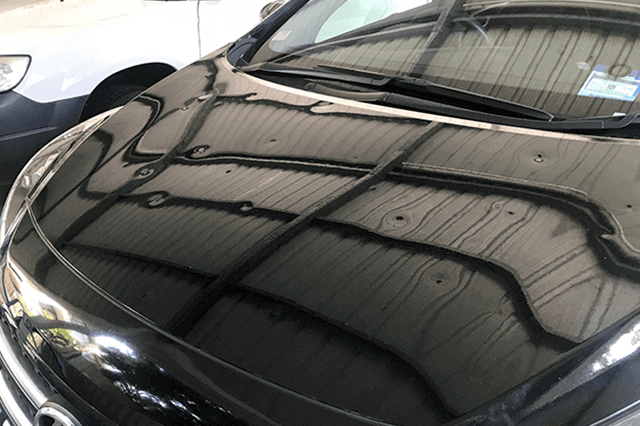Understanding the Impact of Hail Damage on Your Car
Hailstorms are among the most destructive natural phenomena, capable of causing extensive damage to property, including your beloved car. While you can take precautions like parking in a garage or using hail-resistant car covers, sometimes, nature’s fury cannot be avoided. In this blog post, we’ll delve into the world of hail damage, understanding its impact on your car, and what steps you can take to mitigate and repair the harm caused.
The Fury of Hailstorms
Hailstorms are meteorological events characterized by the formation of hailstones, which are balls of ice that range in size from small pellets to golf balls or larger. These ice balls plummet from the sky with alarming force, leaving a trail of destruction in their wake. The size and density of hailstones can vary greatly, and this variability plays a significant role in determining the extent of damage to your car.
The Impact on Your Vehicle
Hail damage to a car can manifest in various ways, and its severity depends on several factors, including the size of the hailstones, the angle and force of impact, and the specific vulnerability of your vehicle’s construction. Here are some common types of hail damage you may encounter:
1. Dents and Dings: Hailstones can dent the body of your car, leaving unsightly marks on the exterior. These dents can range from minor, barely noticeable dimples to more significant and obvious damage.
2. Cracked or Shattered Windshields: Hailstones can crack or shatter your car’s windshield, impairing visibility and safety. Even small cracks can compromise the structural integrity of the glass, making it crucial to address them promptly.
3. Damaged Paint: Hail can chip or scratch your car’s paint, exposing the metal beneath to rust and corrosion. If left untreated, this can lead to more extensive and costly repairs down the road.
4. Interior Damage: In severe hailstorms, water can enter your vehicle through damaged windows or seals, causing water damage to the interior, including the upholstery, electronics, and carpeting.
The Hidden Dangers
While some hail damage is immediately apparent, other effects may not surface until later. Here are some hidden dangers associated with hail damage:
1. Rust and Corrosion: Even small paint chips and scratches can expose your car’s metal body to the elements. Over time, this can lead to rust and corrosion, compromising the structural integrity of your vehicle.
2. Reduced Resale Value: A car with a history of hail damage typically has a lower resale value. Potential buyers may be wary of purchasing a vehicle with a damaged history, making it harder to sell at a desirable price.
3. Safety Concerns: Hail damage, particularly to the windshield, can impair your visibility while driving. Cracks and chips in the glass can spread and obstruct your view, posing safety risks.
Mitigating Hail Damage
While you can’t control the weather, there are steps you can take to mitigate the impact of hail damage on your car:
1. Hail-Resistant Car Covers: Invest in a hail-resistant car cover designed to protect your vehicle during storms. These covers are made of durable materials and can absorb the impact of hailstones, minimizing damage.
2. Garage Parking: Whenever possible, park your car in a garage or covered area to shield it from hailstorms. If you don’t have access to a garage, consider alternative shelter options like carports.
3. Weather Alerts: Stay informed about weather forecasts and hailstorm warnings. If a hailstorm is predicted, take precautions to protect your vehicle, such as relocating it to a safer area.
4. Insurance Coverage: Ensure that your auto insurance policy includes coverage for hail damage. Comprehensive insurance typically covers hail-related repairs, so review your policy and make any necessary updates.
Assessing Hail Damage
After a hailstorm, it’s essential to assess the extent of the damage to your vehicle. Here’s how to go about it:
1. Exterior Inspection: Start by examining the exterior of your car. Look for dents, dings, and cracked or chipped paint. Take photos to document the damage.
2. Windshield Examination: Inspect the windshield for cracks or chips. Even minor damage should not be ignored, as it can worsen over time.
3. Interior Check: Check the interior of your car for signs of water leakage. This includes wet carpeting, damp upholstery, and water stains.
4. Professional Inspection: If you’re unsure about the extent of the damage, or if it’s significant, consider taking your car to a professional auto body shop for a thorough inspection. They can provide a detailed assessment and repair estimate.
Repairing Hail Damage
The approach to repairing hail damage depends on the severity of the damage and the affected areas of your car. Here are some common repair methods:
1. Paintless Dent Repair (PDR): This technique involves manipulating and massaging dents from the inside, restoring the damaged area to its original shape without the need for painting. PDR is effective for minor to moderate dents.
2. Windshield Replacement/Repair: Cracked or shattered windshields should be replaced promptly. Smaller chips can often be repaired with resin to prevent further damage.
3. Paint Repair: For damaged paint, auto body shops can touch up minor scratches and chips or perform a complete repaint for more severe damage.
4. Interior Restoration: Address interior damage by drying out the affected areas, treating upholstery for mold and mildew, and repairing or replacing damaged components.
Hail damage to your car can be a distressing experience, but with the right precautions, assessment, and repairs, you can minimize the long-term impact on your vehicle’s appearance, safety, and value. Remember to stay vigilant during hailstorms, invest in protective measures, and consult professionals when necessary to ensure your car remains in excellent condition, no matter what Mother Nature throws your way.

